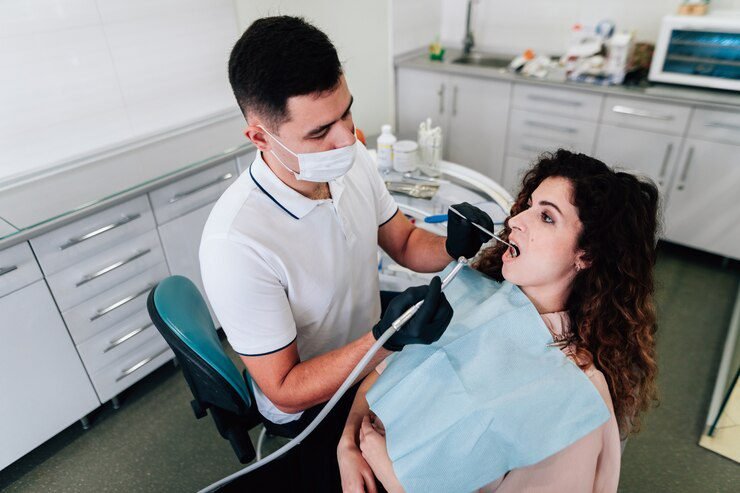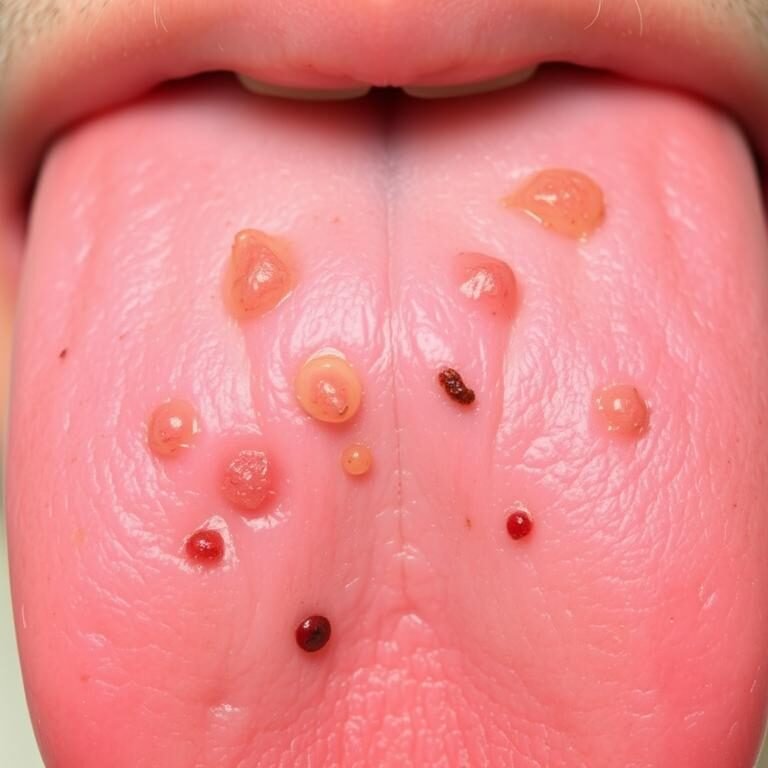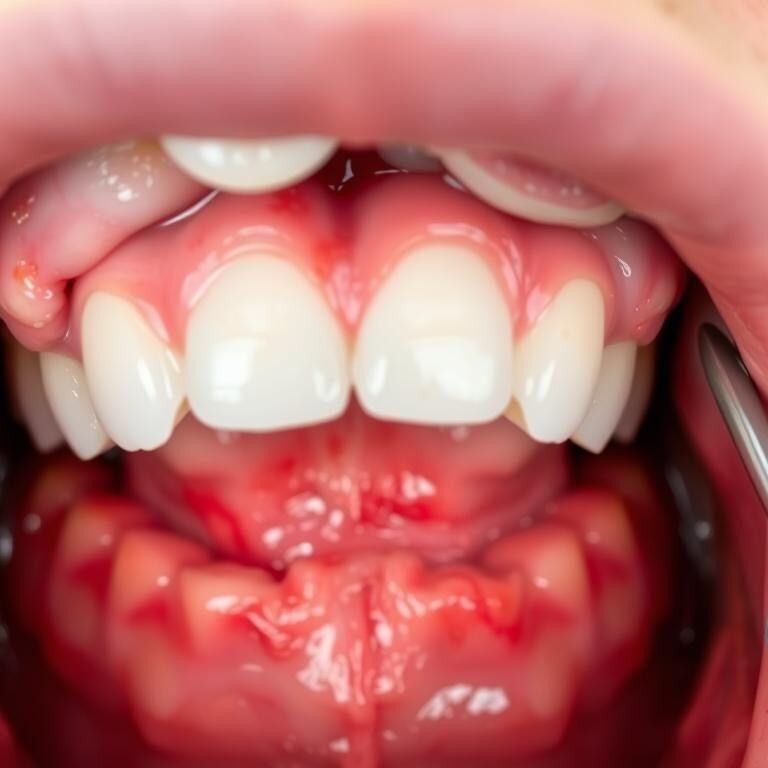Table of Contents
The Importance of Regular Dental Check-ups

Regular dental check-ups are crucial for maintaining oral health and preventing dental issues. These appointments allow dental professionals to assess and monitor the condition of your teeth, gums, and overall oral cavity. During a dental check-up, your dentist will perform a comprehensive examination, which may include a thorough cleaning, X-rays, and oral cancer screening.
One of the primary benefits of regular dental check-ups is early detection and prevention of dental problems. By visiting your dentist regularly, any signs of tooth decay, gum disease, or oral cancer can be identified at an early stage when they are easier to treat. Your dentist can also provide valuable guidance on maintaining good oral hygiene habits and offer recommendations to address any specific concerns you may have, such as teeth grinding or bad breath.
Moreover, regular dental check-ups play a vital role in promoting overall health and well-being. Research has shown a clear link between oral health and systemic health issues, such as cardiovascular disease and diabetes. By keeping your oral health in check, you are taking proactive steps towards safeguarding your overall health. Therefore, make it a priority to schedule regular dental check-ups to ensure the longevity of your teeth and maintain a healthy, beautiful smile.
Understanding Oral Hygiene: Proper Brushing Techniques
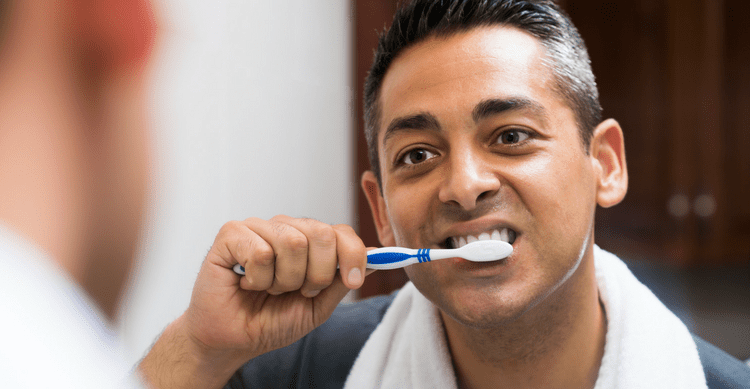
Proper brushing techniques play a pivotal role in maintaining good oral hygiene and preventing dental problems. Many individuals underestimate the importance of brushing their teeth correctly, thinking that it is merely a routine task. However, using the right techniques can make a significant difference in the overall health of your teeth and gums.
Firstly, it is crucial to select a toothbrush with soft bristles and a small head. This ensures that you can reach all areas of your mouth comfortably without causing any harm to your delicate gum tissues. Secondly, using the correct brushing motion is vital. Instead of using back and forth strokes, it is recommended to use a gentle circular motion to remove plaque and debris effectively. Additionally, it is essential to brush all surfaces of your teeth, including the front, back, and chewing surfaces, for at least two minutes. To ensure thorough cleaning, pay extra attention to the gumline, as this is where plaque tends to accumulate. Finally, do not forget to brush your tongue gently to remove bacteria and maintain fresh breath.
Following these simple guidelines will help promote optimal oral health. However, it is important to remember that brushing alone is not enough to maintain good oral hygiene. Regular dental check-ups, proper flossing techniques, and incorporating mouthwash into your routine are also essential components of a comprehensive oral care regimen. By being diligent and committed to proper oral hygiene habits, you can significantly reduce the risk of dental issues and enjoy a healthy smile for years to come.
The Role of Flossing in Maintaining Dental Health
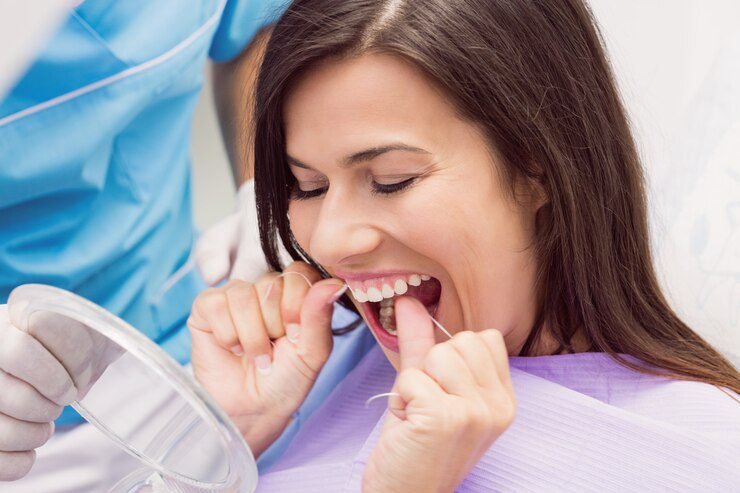
Flossing is a crucial aspect of maintaining optimal dental health. While brushing your teeth helps to remove plaque and food particles from the surfaces of your teeth, flossing is necessary to reach the spaces between your teeth and along the gumline. These areas are often difficult to clean with just a toothbrush, making flossing an essential practice in promoting oral hygiene.
By incorporating flossing into your daily dental routine, you can effectively remove plaque build-up and reduce the risk of gum disease, cavities, and bad breath. According to the American Dental Association (ADA), flossing helps to prevent the formation of tartar, a hard substance that can only be removed by a dental professional. Additionally, removing plaque and food debris from between your teeth can help to prevent tooth decay and the development of gingivitis, the first stage of gum disease. Regular flossing also contributes to fresh breath by eliminating odor-causing bacteria that can become trapped in hard-to-reach areas.
The Benefits of Using Mouthwash and Dental Rinses
Using mouthwash and dental rinses can provide several benefits when incorporated into a regular oral hygiene routine. These products are specifically formulated to target harmful bacteria and plaque that can accumulate in the mouth, even after brushing and flossing.
One of the key benefits of using mouthwash is its ability to freshen breath. Mouthwash contains ingredients such as menthol and essential oils that help kill bacteria that cause bad breath. By using mouthwash after brushing and flossing, you can effectively neutralize unpleasant odors in your mouth, leaving you with a fresher and more confident smile.
Furthermore, mouthwash can also assist in reducing the risk of gum disease. Gum disease is a common oral health issue that can lead to symptoms such as gum inflammation, bleeding, and even tooth loss. Mouthwash that contains antibacterial agents like chlorhexidine can help control the growth of bacteria, reducing the risk of gum disease and promoting overall gum health.
It is important to note that while mouthwash can be a valuable addition to your oral hygiene routine, it should not replace regular brushing and flossing. These products are most effective when used in conjunction with thorough brushing and flossing techniques, as they can help target hard-to-reach areas and provide an extra layer of protection against dental problems. Dentists often recommend choosing a mouthwash that carries the American Dental Association (ADA) seal of approval to ensure its safety and effectiveness.
In conclusion, incorporating mouthwash and dental rinses into your daily oral hygiene routine can offer several benefits, including fresher breath and improved gum health. However, it is crucial to remember that these products should be used in addition to regular brushing and flossing, not as a substitute. By maintaining a thorough oral care routine and consulting with your dentist, you can ensure optimal dental health and a radiant smile.
The table below outlines the benefits of using mouthwash and dental rinses, highlighting their role in maintaining oral health and hygiene.
| Benefits of Using Mouthwash and Dental Rinses | Description |
|---|---|
| Freshens Breath | Mouthwash and dental rinses help freshen breath by killing odor-causing bacteria in the mouth and neutralizing unpleasant odors. By rinsing away food particles and bacteria that can contribute to bad breath, mouthwash leaves the mouth feeling clean and refreshed, providing immediate relief from halitosis (bad breath). |
| Reduces Plaque and Gingivitis | Antiseptic mouthwashes contain ingredients such as chlorhexidine or essential oils that help reduce plaque buildup and prevent gingivitis (gum inflammation). Regular use of mouthwash as part of an oral hygiene routine can complement brushing and flossing by reaching areas of the mouth that may be difficult to clean with a toothbrush or dental floss alone, promoting healthier gums and teeth. |
| Strengthens Tooth Enamel | Some mouthwashes contain fluoride, a mineral that helps strengthen tooth enamel and prevent tooth decay (cavities). Fluoride mouth rinses can remineralize weakened enamel, making teeth more resistant to acid attacks from plaque bacteria and acidic foods and beverages. Incorporating fluoride mouthwash into daily oral care can help protect teeth and reduce the risk of cavities. |
| Soothes Oral Irritation | Mouthwash with soothing ingredients such as aloe vera or chamomile can help alleviate oral irritation and discomfort caused by conditions such as canker sores, oral ulcers, or minor gum inflammation. These gentle mouth rinses provide relief from soreness and inflammation, promoting healing and comfort for individuals with oral sensitivity or irritation. |
| Promotes Oral Health in Hard-to-Reach Areas | Rinsing with mouthwash can reach areas of the mouth that may be challenging to clean with a toothbrush or dental floss alone, such as between teeth, along the gumline, and around dental appliances (e.g., braces, bridges, or dental implants). Mouthwash helps flush out debris and bacteria from these hard-to-reach areas, improving overall oral hygiene and reducing the risk of dental issues. |
| Enhances Compliance with Oral Hygiene Routine | Mouthwash offers a convenient and accessible adjunct to daily oral hygiene practices, making it easier for individuals to maintain consistent oral care habits. Adding mouthwash to a daily oral hygiene routine can enhance compliance with brushing and flossing, providing an extra layer of protection against plaque, bacteria, and oral health issues. |
A Guide to Choosing the Right Toothpaste and Toothbrush
When it comes to maintaining proper oral hygiene, choosing the right toothpaste and toothbrush is essential. With the wide range of options available in the market, it can be overwhelming to make the right choice. However, understanding the key factors to consider can help you make an informed decision.
First and foremost, it is important to choose a toothpaste that contains fluoride. Fluoride is a mineral that helps strengthen the enamel of your teeth, making them more resistant to tooth decay and cavities. Look for toothpaste that has the American Dental Association (ADA) seal of approval, as it signifies that the product has been rigorously tested and meets the necessary standards.
Additionally, consider any specific dental concerns or conditions you may have. For example, if you have sensitive teeth, opt for a toothpaste specifically designed to alleviate sensitivity. If you are prone to gum disease or have gum sensitivity, choose a toothpaste formulated to promote gum health.
Moving on to toothbrushes, it is recommended to use a soft-bristled toothbrush. Hard bristles can actually damage the enamel and irritate the gums. The size and shape of the toothbrush head should also be considered, as it should comfortably fit into your mouth and reach all areas of your teeth. Manual toothbrushes are effective when used correctly, but electric toothbrushes can provide additional benefits such as better plaque removal.
In conclusion, selecting the right toothpaste and toothbrush is crucial for maintaining optimal oral health. By choosing toothpaste with fluoride and considering specific dental concerns, and using a soft-bristled toothbrush that fits your mouth well, you can ensure effective cleaning and protection for your teeth and gums.
Exploring the Relationship Between Diet and Dental Health
Diet plays a crucial role in maintaining optimal dental health. What we eat and drink can greatly impact our teeth and gums, both positively and negatively. A well-balanced diet that includes essential nutrients promotes strong teeth and healthy gums, while a poor diet lacking in these nutrients can lead to dental problems.
One key nutrient for dental health is calcium, which is essential for the development and strength of teeth. Incorporating calcium-rich foods such as milk, cheese, and yogurt into your diet can help prevent tooth decay and keep your teeth strong. Additionally, vitamin D is necessary for the absorption of calcium, so it’s important to ensure you’re getting enough sunlight exposure or consuming foods rich in this vitamin, such as fatty fish and fortified dairy products.
Another vital aspect of a tooth-friendly diet is limiting the intake of sugary and acidic foods and drinks. Sugary substances fuel the growth of harmful bacteria in the mouth, leading to plaque formation, cavities, and gum disease. Acidic foods and beverages, such as citrus fruits and carbonated drinks, erode tooth enamel over time, making teeth more vulnerable to decay. It’s best to consume these items in moderation and practice good oral hygiene habits, such as brushing and flossing, after consuming them.
How to Combat Bad Breath and Maintain Fresh Breath
Maintaining fresh breath is essential for both oral hygiene and social interactions. Bad breath, also known as halitosis, can be caused by a variety of factors such as poor oral hygiene, gum disease, dry mouth, certain foods, or underlying health conditions. Fortunately, there are effective ways to combat bad breath and keep your breath fresh throughout the day.
First and foremost, practicing good oral hygiene is crucial in preventing bad breath. This includes brushing your teeth at least twice a day using a fluoride toothpaste and a soft-bristled toothbrush. Be sure to brush not only your teeth but also your tongue and the roof of your mouth, as bacteria tend to accumulate in these areas. Additionally, don’t forget to replace your toothbrush every three to four months, or sooner if the bristles become frayed.
In addition to regular brushing, flossing plays a crucial role in maintaining fresh breath. Flossing helps remove plaque and debris from between your teeth where a toothbrush cannot reach, thus reducing the risk of gum disease and bad breath. Aim to floss at least once a day, gently sliding the floss between each tooth and along the gum line. If you find traditional flossing challenging or uncomfortable, consider using interdental brushes or water flossers as alternative options. These devices effectively clean between teeth and are particularly helpful for individuals with braces or dental restorations.
To further enhance your oral hygiene routine, incorporating the use of mouthwash or dental rinses can be beneficial. These products help kill bacteria and freshen your breath. Look for alcohol-free mouthwashes, as alcohol can cause dry mouth, which can contribute to bad breath. However, it’s important to note that mouthwash should never replace brushing and flossing; rather, it should be used as an additional step in your oral care regimen.
It’s worth mentioning that maintaining fresh breath goes beyond oral hygiene practices. Staying hydrated by drinking plenty of water throughout the day helps prevent dry mouth, a condition where saliva production is reduced, leading to bad breath. Chewing sugar-free gum or sucking on sugar-free mints can also stimulate saliva flow and temporarily mask bad breath odors.
While basic oral hygiene habits significantly contribute to combatting bad breath, chronic halitosis may require a comprehensive evaluation by a dental professional. In some cases, bad breath may be an indication of an underlying dental or medical condition that needs to be addressed. Regular dental check-ups are essential for detecting and treating any potential issues, ensuring not only fresh breath but also overall oral health.
In conclusion, maintaining fresh breath involves adopting a well-rounded approach that includes proper oral hygiene practices, regular dental visits, and lifestyle habits. By following these guidelines, you can combat bad breath, boost your oral health, and enjoy the confidence of fresh breath in your everyday interactions.
The Impact of Tobacco Use on Oral Health
Tobacco use has been widely recognized as one of the most detrimental habits for oral health. The impact of tobacco on the mouth can be devastating, leading to a range of serious oral health issues. First and foremost, smoking can cause staining of the teeth, resulting in a yellowish or brownish discoloration that can be difficult to remove. Despite practicing good oral hygiene, the stubborn stains caused by tobacco can persist, affecting the appearance of one’s smile.
Moreover, tobacco use increases the risk of developing gum disease, a condition that affects the health of the tissues surrounding the teeth. Gum disease can manifest as gingivitis, characterized by redness, swelling, and bleeding of the gums, or progress into periodontitis, a more severe form of the disease that can lead to tooth loss. The toxins present in tobacco smoke weaken the immune system, making it harder for the body to fight off infection and resulting in an increased susceptibility to gum disease. Additionally, smoking can delay the healing process after dental procedures such as extractions or implants, further compromising oral health.
The negative impact of tobacco on oral health extends beyond the gums and teeth. It also significantly increases the risk of developing oral cancer, a potentially life-threatening condition. According to the Centers for Disease Control and Prevention (CDC), approximately 90% of oral cancers are linked to tobacco use. The harmful chemicals in tobacco products can damage the DNA in the cells of the mouth, leading to the formation of cancerous tumors. Apart from the risk of developing oral cancer, tobacco use also heightens the chances of developing other forms of oral lesions and diseases.
It is crucial to highlight the importance of quitting tobacco in order to protect oral health. By quitting smoking and avoiding tobacco use, individuals can significantly reduce their risk of developing a range of oral health problems. Dentists play an essential role in educating patients about the harmful effects of tobacco and promoting smoking cessation. By working together, we can help individuals maintain a healthy and vibrant smile while improving their overall well-being.
Understanding the Connection Between Stress and Dental Problems
Stress can wreak havoc on our overall health, and dental problems are no exception. Research has shown a clear connection between stress and various oral health issues. When we are stressed, our bodies produce higher levels of cortisol, a hormone that can lead to a weakened immune system. This weakened immune response can cause inflammation in the gums, making them more susceptible to gum disease.
In addition, stress can also lead to teeth grinding and jaw clenching, a condition known as bruxism. This can put excessive pressure on the teeth, causing them to wear down, crack, or become loose over time. Furthermore, individuals who are experiencing high levels of stress often neglect their oral hygiene routines, leading to a buildup of plaque and an increased risk of cavities and gum disease.
It is important to recognize the impact that stress can have on our oral health and take steps to minimize its effects. From practicing stress management techniques such as exercise, meditation, and deep breathing, to maintaining a proper oral hygiene routine and seeking professional help if needed, these proactive measures can help protect our dental health in the face of stress. By understanding the connection between stress and dental problems, we can take control of our oral well-being and ensure a healthy smile for years to come.
The Role of Genetics in Dental Health
Genetics plays a significant role in dental health, influencing factors such as tooth development, enamel strength, and susceptibility to certain oral diseases. While it is true that good oral hygiene practices can help maintain dental health, it is important to understand that genetics can also play a part in determining the overall condition of our teeth and gums.
One aspect affected by genetics is tooth structure. The shape and size of our teeth, as well as the alignment of our jaws, are largely determined by our genes. People with misaligned teeth or overcrowding issues may have inherited these traits from their parents. Similarly, the thickness and density of tooth enamel can be hereditary, making some individuals more prone to tooth decay or sensitivity than others.
In addition to tooth structure, genetic factors can impact the risk of developing gum diseases such as periodontitis. Studies have shown that certain gene variations can make individuals more susceptible to gum inflammation and bone loss. These genetic predispositions, combined with poor oral hygiene habits, can increase the likelihood of developing gum disease and other related complications.
While we cannot change our genetic makeup, understanding the role genetics plays in dental health can help us take proactive measures to minimize the risks. Regular dental check-ups, proper oral hygiene practices, and a healthy lifestyle can all contribute to maintaining optimal dental health, even in the presence of genetic factors. By working closely with dental professionals and staying informed about our own oral health, we can effectively manage any genetic predispositions and ensure a healthy smile for years to come.
Preventive Measures: Dental Sealants and Fluoride Treatments
Dental sealants and fluoride treatments are key preventive measures in maintaining oral health and preventing tooth decay. Dental sealants are thin, plastic coatings that are applied to the chewing surfaces of the back teeth, where cavities are more likely to develop. These sealants act as a barrier, protecting the vulnerable pits and fissures from bacteria and food particles that can lead to decay.
The application of dental sealants is a quick and painless process. The tooth’s surface is cleaned and dried, and the sealant material is then applied and allowed to bond to the tooth. Once in place, the sealant provides long-lasting protection that can withstand the forces of chewing and brushing. Studies have shown that sealants can reduce the risk of cavities on the chewing surfaces of molars by up to 80% for the first two years, and continue to offer significant protection for up to four years or more.
Fluoride treatments, on the other hand, work to strengthen the teeth and make them more resistant to acid attacks from bacteria and acids in the mouth. Fluoride is a naturally occurring mineral that helps to remineralize weakened tooth enamel, preventing further decay and enhancing overall dental health. Fluoride treatments can be applied topically as a gel, foam, or varnish, or ingested in the form of fluoridated water or dietary supplements.
Research has consistently shown that fluoride treatments can reduce cavities by up to 25% in children and adults. In fact, the Centers for Disease Control and Prevention (CDC) has recognized water fluoridation as one of the top ten public health achievements of the 20th century. By incorporating fluoride treatments into a comprehensive oral care routine, individuals can significantly reduce their risk of tooth decay and improve their overall oral health.
The Link Between Oral Health and Overall Well-being
Maintaining good oral health is not only essential for a dazzling smile, but it also plays a crucial role in our overall well-being. Numerous studies have indicated the strong link between oral health and various systemic diseases, including cardiovascular diseases, diabetes, respiratory infections, and even certain cancers.
One significant association is between gum disease, or periodontitis, and heart disease. Research suggests that the bacteria responsible for periodontal disease can enter the bloodstream and contribute to the formation of plaques in the arteries, leading to atherosclerosis and an increased risk of heart attacks and strokes. Additionally, chronic inflammation caused by gum disease may trigger an inflammatory response throughout the body, contributing to the development of other systemic conditions.
Furthermore, poor oral health has been closely linked to diabetes. Individuals with diabetes are more susceptible to oral infections and gum disease due to elevated blood sugar levels, which weaken the immune system’s ability to fight off bacteria. Conversely, untreated gum disease can make it more challenging to control blood sugar levels, potentially exacerbating diabetes-related complications.
These findings highlight the importance of maintaining excellent oral hygiene habits and seeking regular dental check-ups. By practicing proper brushing and flossing techniques, as well as incorporating mouthwash into our oral care routine, we can significantly reduce the risk of oral health issues and potentially safeguard our overall well-being.
Dealing with Common Dental Issues: Cavities and Tooth Decay
Cavities and tooth decay are common dental issues that affect people of all ages. These conditions occur when bacteria in the mouth produce acids that attack the tooth enamel, leading to the formation of cavities. If left untreated, cavities can cause pain, sensitivity, and even tooth loss.
Preventing cavities and tooth decay begins with maintaining good oral hygiene practices. This includes brushing your teeth at least twice a day with fluoride toothpaste and using a soft-bristled toothbrush. It is important to brush all surfaces of your teeth and along the gumline to remove plaque and bacteria. Additionally, incorporating flossing into your daily routine helps to clean in between the teeth where your toothbrush cannot reach. By practicing these habits consistently, you can reduce the risk of cavities and tooth decay and promote optimal dental health.
In addition to daily oral hygiene practices, regular dental check-ups are essential for dealing with cavities and preventing tooth decay. During these check-ups, your dentist will conduct a thorough examination of your teeth, gums, and mouth. They may also perform dental X-rays to detect any hidden cavities or other dental problems. By addressing cavities early on, your dentist can prevent further damage and provide necessary treatments such as fillings or dental sealants. Furthermore, your dentist can offer guidance on proper oral hygiene techniques and offer personalized recommendations to improve your dental health.
In conclusion, cavities and tooth decay can have serious implications for oral health if not properly addressed. By maintaining good oral hygiene practices and seeking regular dental check-ups, you can effectively deal with these common dental issues. Taking proactive steps to prevent cavities and tooth decay will not only safeguard your dental health but also contribute to your overall well-being.
The Importance of Gum Health: Preventing Gum Disease
Maintaining healthy gums is an essential part of overall dental health. Gum disease, also known as periodontal disease, is a common condition that affects the gums and the surrounding tissues. If left untreated, it can lead to serious consequences such as tooth loss and even impact your overall well-being. Therefore, it is crucial to emphasize the importance of gum health and the preventive measures that can be taken to prevent gum disease.
One of the most effective ways to prevent gum disease is by practicing good oral hygiene. This includes brushing your teeth at least twice a day with a soft-bristled toothbrush and fluoride toothpaste. Proper brushing techniques are necessary to remove plaque and food particles from the gum line, preventing the buildup of bacteria that can cause gum inflammation. Additionally, daily flossing plays a vital role in removing plaque and debris from areas that cannot be reached by a toothbrush alone. Regular dental check-ups and professional teeth cleanings are also essential for maintaining gum health, as dental professionals can detect early signs of gum disease and provide appropriate treatments. By prioritizing gum health through these preventive measures, you can significantly reduce the risk of gum disease and ensure a healthier smile.
Exploring Cosmetic Dentistry: Options for Enhancing Your Smile
Cosmetic dentistry offers a range of options for enhancing your smile and improving your overall appearance. These procedures are designed to address various dental imperfections, such as stained or discolored teeth, chipped or broken teeth, misaligned teeth, and gaps between teeth. By undergoing cosmetic dentistry treatments, you can achieve a smile that you can confidently show off.
One popular option for enhancing your smile is teeth whitening. Over time, teeth can become stained or discolored due to factors such as aging, certain foods and beverages, smoking, and poor oral hygiene. Teeth whitening procedures, whether done in-office or at home, can effectively remove these stains and restore your teeth to their natural whiteness. This can significantly improve the overall appearance of your smile and enhance your self-confidence.
Another common cosmetic dentistry procedure is veneers. Veneers are thin, custom-made shells that are bonded to the front surface of your teeth. They can be used to correct a range of cosmetic dental issues, including chipped or cracked teeth, gaps between teeth, and misshapen teeth. Veneers are designed to match the color and shape of your natural teeth, providing you with a seamless and natural-looking smile.
In addition to teeth whitening and veneers, other cosmetic dentistry options include dental bonding, dental implants, and orthodontic treatments. Dental bonding involves applying a tooth-colored resin to repair chipped or cracked teeth, while dental implants are used to replace missing teeth. Orthodontic treatments, such as braces and clear aligners, can help straighten misaligned teeth and improve the alignment of your bite.
Before undergoing any cosmetic dentistry procedure, it is important to consult with a qualified and experienced dentist. They will evaluate your oral health, discuss your goals and expectations, and recommend the most suitable treatment options for you. By choosing the right cosmetic dentistry option, you can achieve a smile that not only looks beautiful but also enhances your overall well-being and self-confidence. So, don’t hesitate to explore the possibilities of cosmetic dentistry and take the first step towards enhancing your smile.
The Benefits of Regular Professional Teeth Cleaning and Dental X-rays
Regular professional teeth cleaning, also known as prophylaxis, and dental X-rays are crucial components of a comprehensive oral health care routine. These preventive measures offer a range of benefits that go beyond just a clean and bright smile.
First and foremost, regular professional teeth cleaning helps to remove built-up plaque and tartar from our teeth and gums. Even with diligent brushing and flossing at home, it’s difficult to reach all the nooks and crannies where plaque can accumulate. Professional cleaning ensures that these hard-to-reach areas are thoroughly cleaned, reducing the risk of gum disease and tooth decay. Additionally, teeth cleaning can also remove surface stains caused by foods, drinks, and lifestyle habits such as smoking.
In addition to teeth cleaning, dental X-rays play a vital role in maintaining oral health. X-rays allow dentists to have a comprehensive view of our teeth and the underlying structures such as the roots and jawbone. This enables them to detect and diagnose issues that may not be immediately visible, such as cavities, impacted teeth, or bone loss. Early detection and treatment of these problems can prevent further damage and potential complications down the line. Dental X-rays may be recommended as part of routine check-ups or when specific concerns are identified, ensuring that our oral health is proactively monitored and any issues are addressed promptly.
By prioritizing regular professional teeth cleaning and dental X-rays, we lay a strong foundation for optimal oral health. These preventive measures not only help maintain a beautiful smile but also contribute to our overall well-being. Investing in regular dental care is an investment in our long-term oral health, and a proactive approach can save us from potential pain, discomfort, and costly treatments in the future. So, let’s make these essential components a part of our oral care regimen and enjoy the benefits they offer.
(Note: This section is not a complete article and does not have a proper conclusion. It is just a short excerpt that can be included in a larger article on the topic of dental health.)
How often should I have a professional teeth cleaning?
It is recommended to have a professional teeth cleaning at least twice a year, or as advised by your dentist.
Are dental x-rays necessary during a regular check-up?
Dental x-rays are an essential part of a regular dental check-up as they allow dentists to detect any underlying dental issues that may not be visible to the naked eye.
Are dental x-rays safe?
Yes, dental x-rays are considered safe as they use minimal radiation exposure. Dentists take necessary precautions to ensure patient safety, such as using lead aprons and collars to protect the rest of the body from radiation.
How long does a professional teeth cleaning appointment usually take?
The duration of a professional teeth cleaning appointment can vary depending on the individual’s oral health, but it usually takes around 30 minutes to an hour.
Will professional teeth cleaning remove stains from my teeth?
Yes, professional teeth cleaning can help remove surface stains from your teeth, resulting in a brighter smile. However, deep stains may require additional cosmetic treatments such as teeth whitening.
Can professional teeth cleaning prevent bad breath?
Yes, professional teeth cleaning can help eliminate bacteria and plaque buildup, which are common causes of bad breath. Regular cleanings can contribute to fresher breath and improved oral hygiene.
Is dental insurance coverage available for professional teeth cleaning and x-rays?
Many dental insurance plans cover professional teeth cleaning and dental x-rays as part of preventive care. However, coverage may vary depending on the specific insurance plan. It is recommended to check with your dental insurance provider for details.
What should I do if I experience discomfort during a professional teeth cleaning?
If you experience discomfort during a professional teeth cleaning, it is important to communicate with your dental hygienist. They can adjust their technique or provide additional numbing options to ensure your comfort during the procedure.
Can professional teeth cleaning help prevent gum disease?
Yes, regular professional teeth cleaning plays a vital role in preventing gum disease. It helps remove plaque and tartar buildup, reducing the risk of developing gum disease.
Are dental x-rays safe during pregnancy?
Dental x-rays are generally considered safe during pregnancy, especially with the use of protective measures. However, it is recommended to inform your dentist if you are pregnant to ensure proper precautions are taken.

